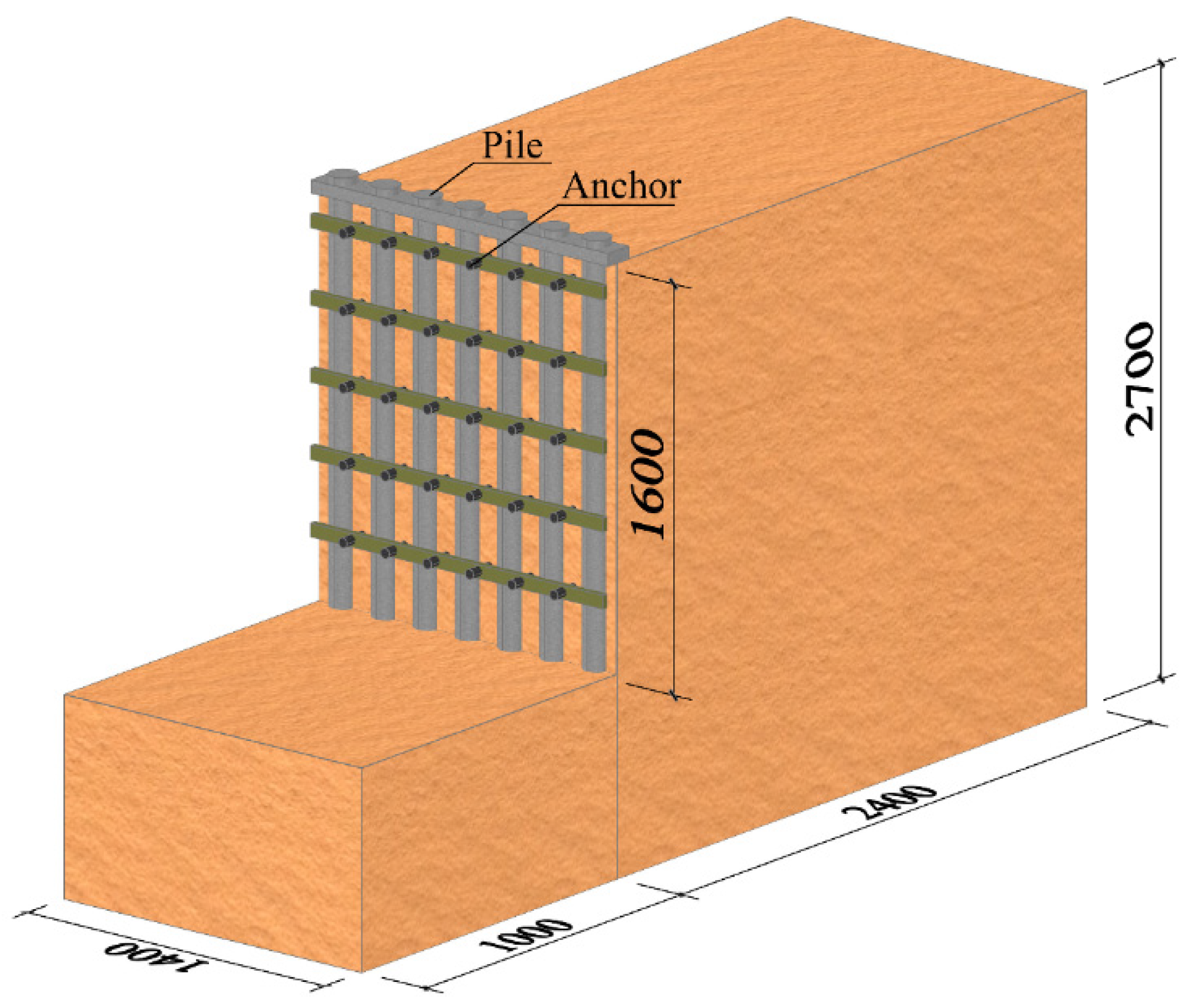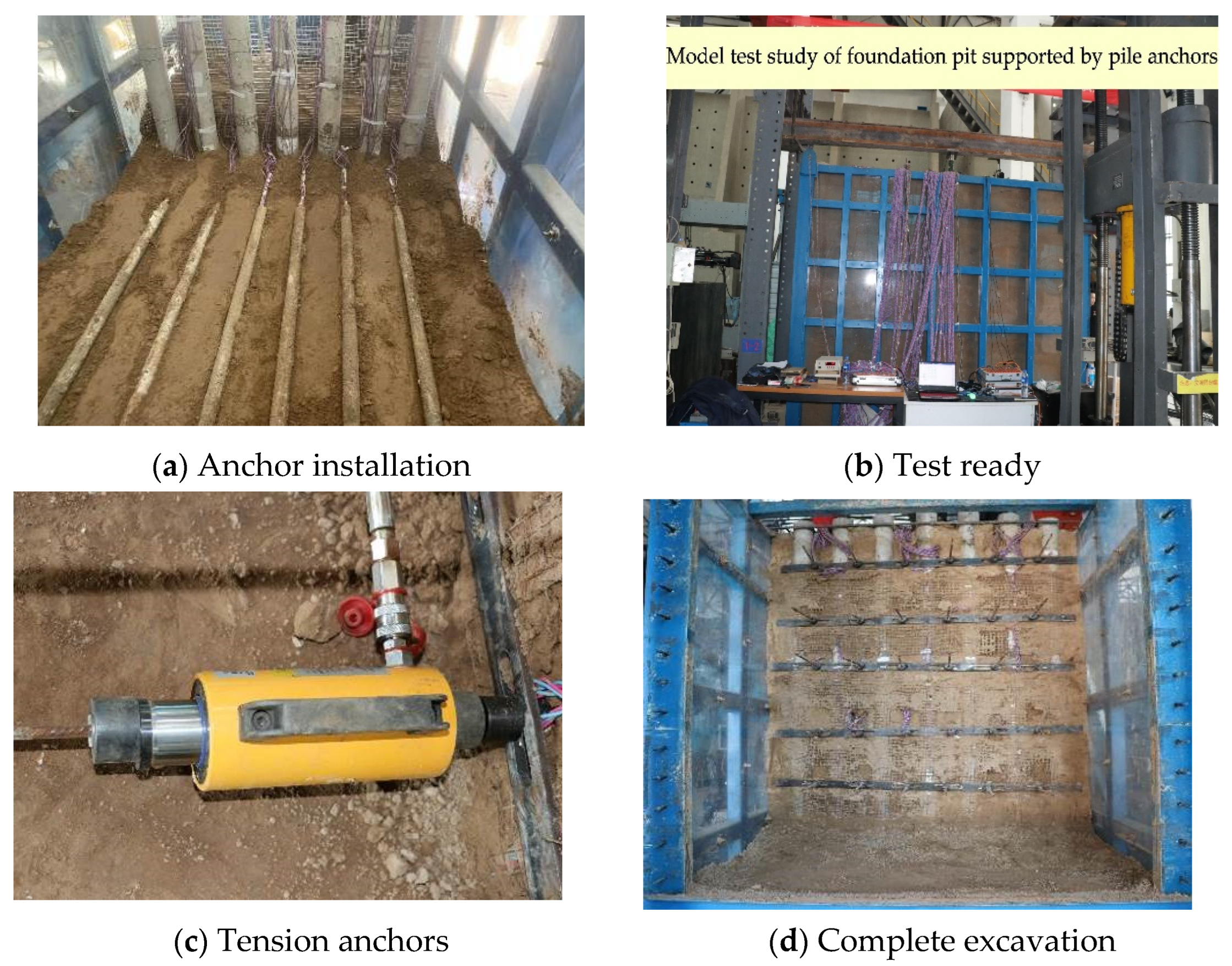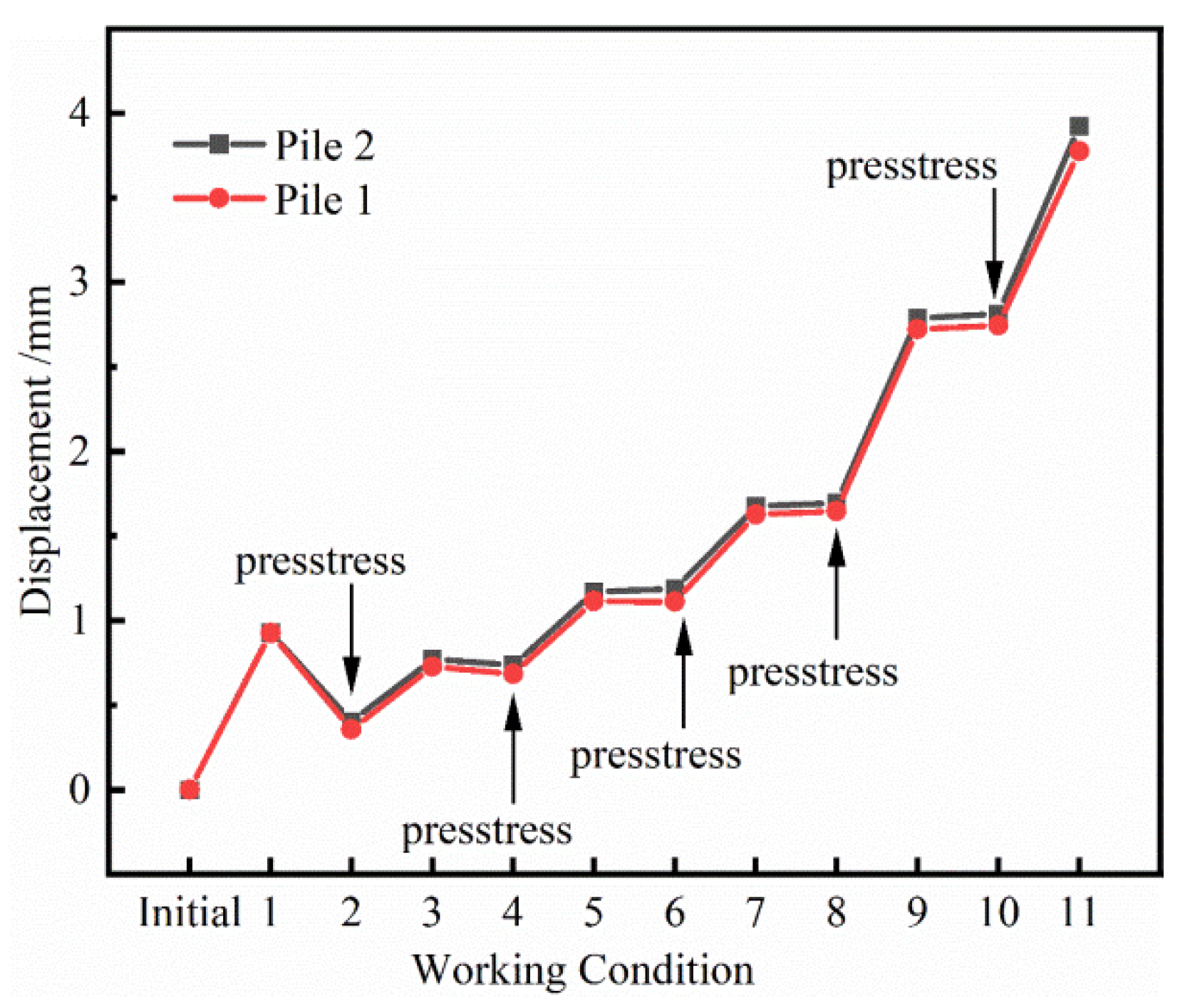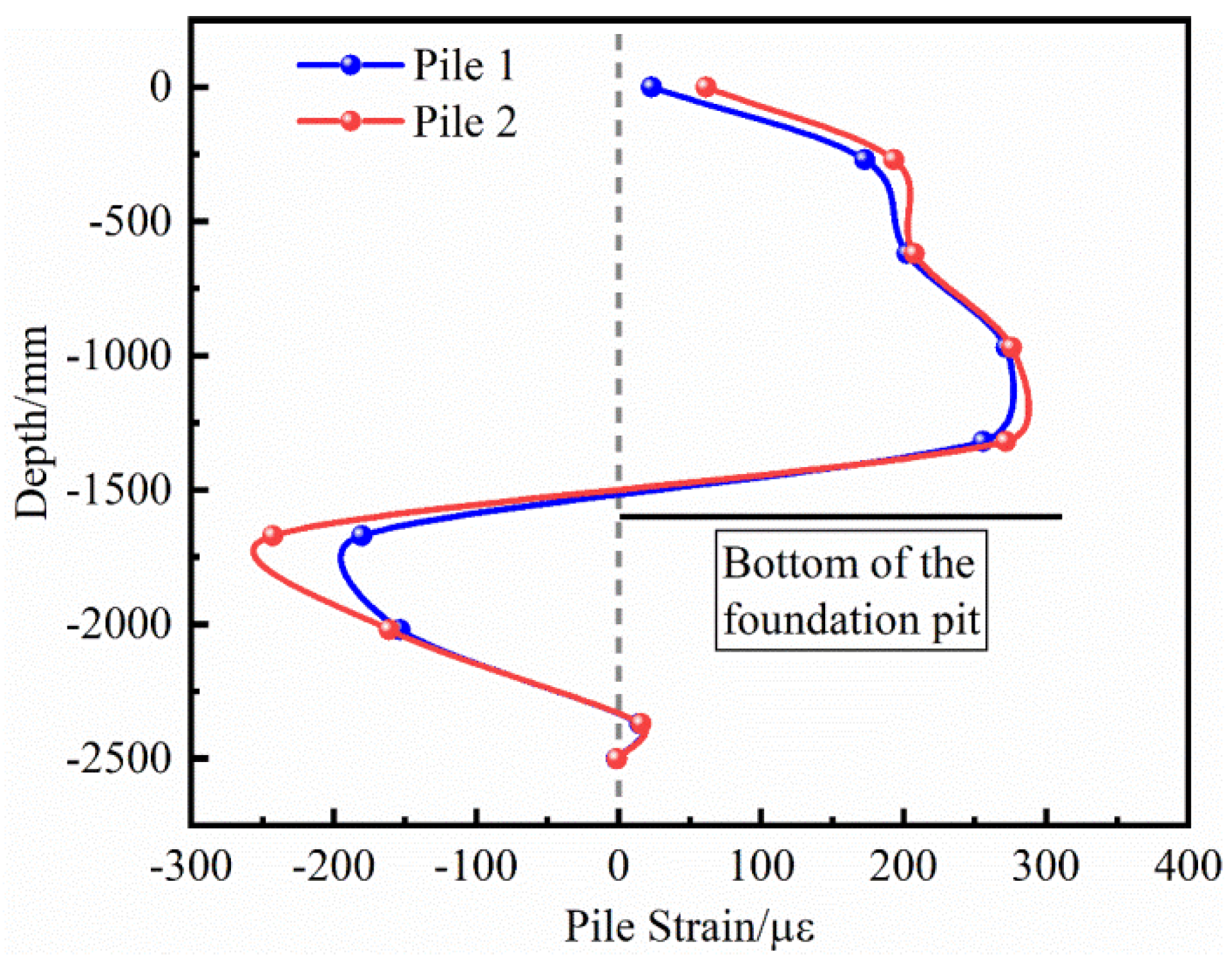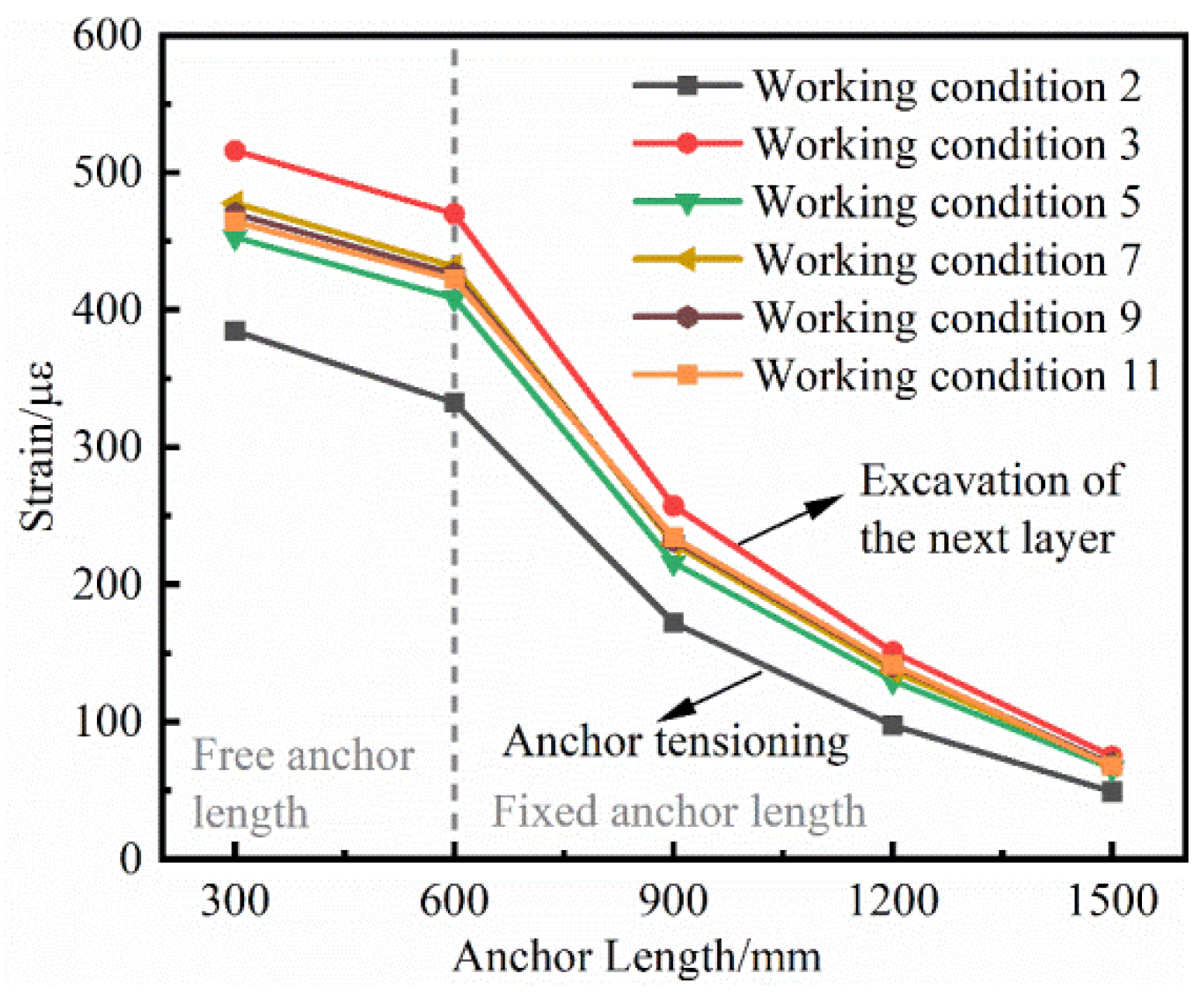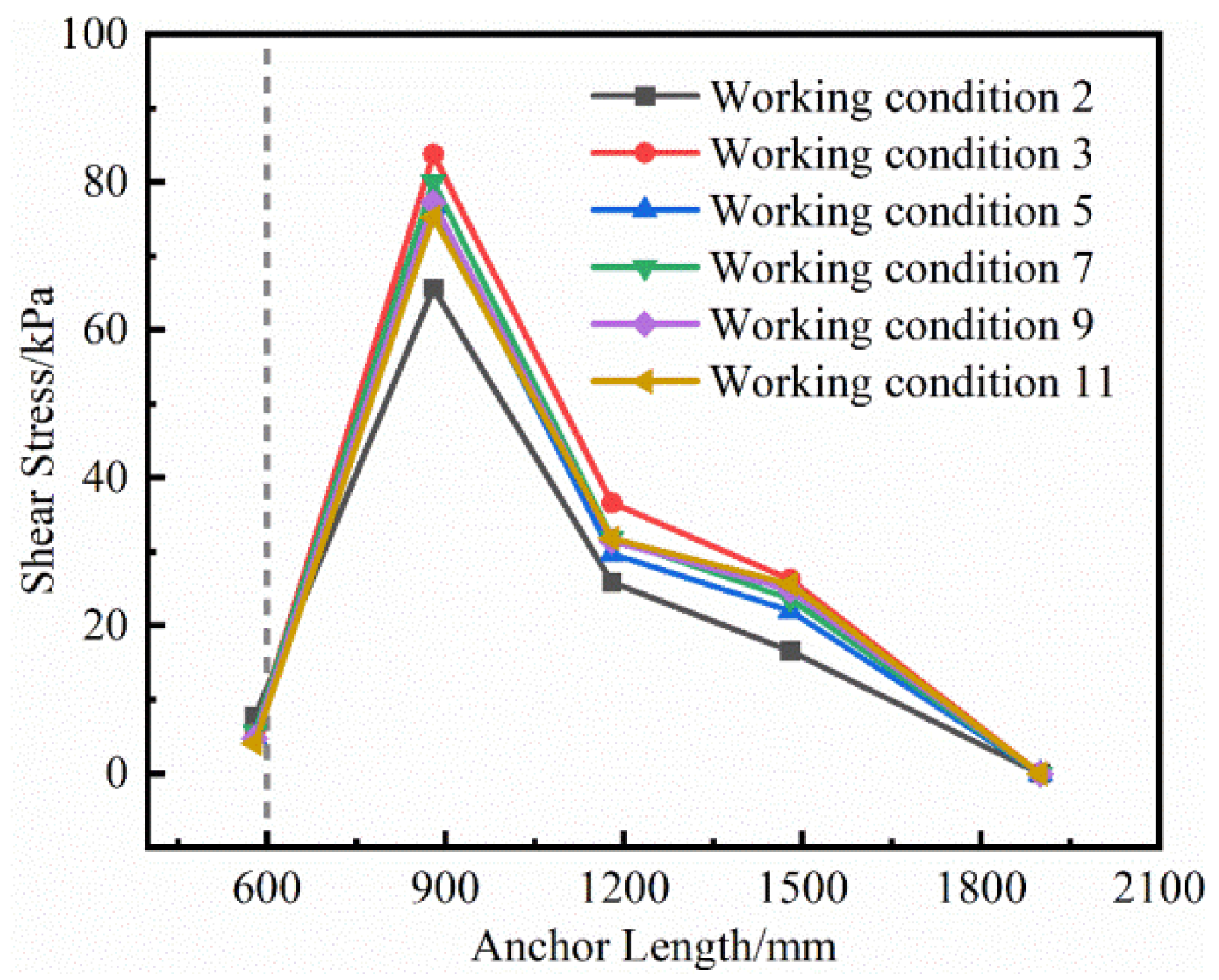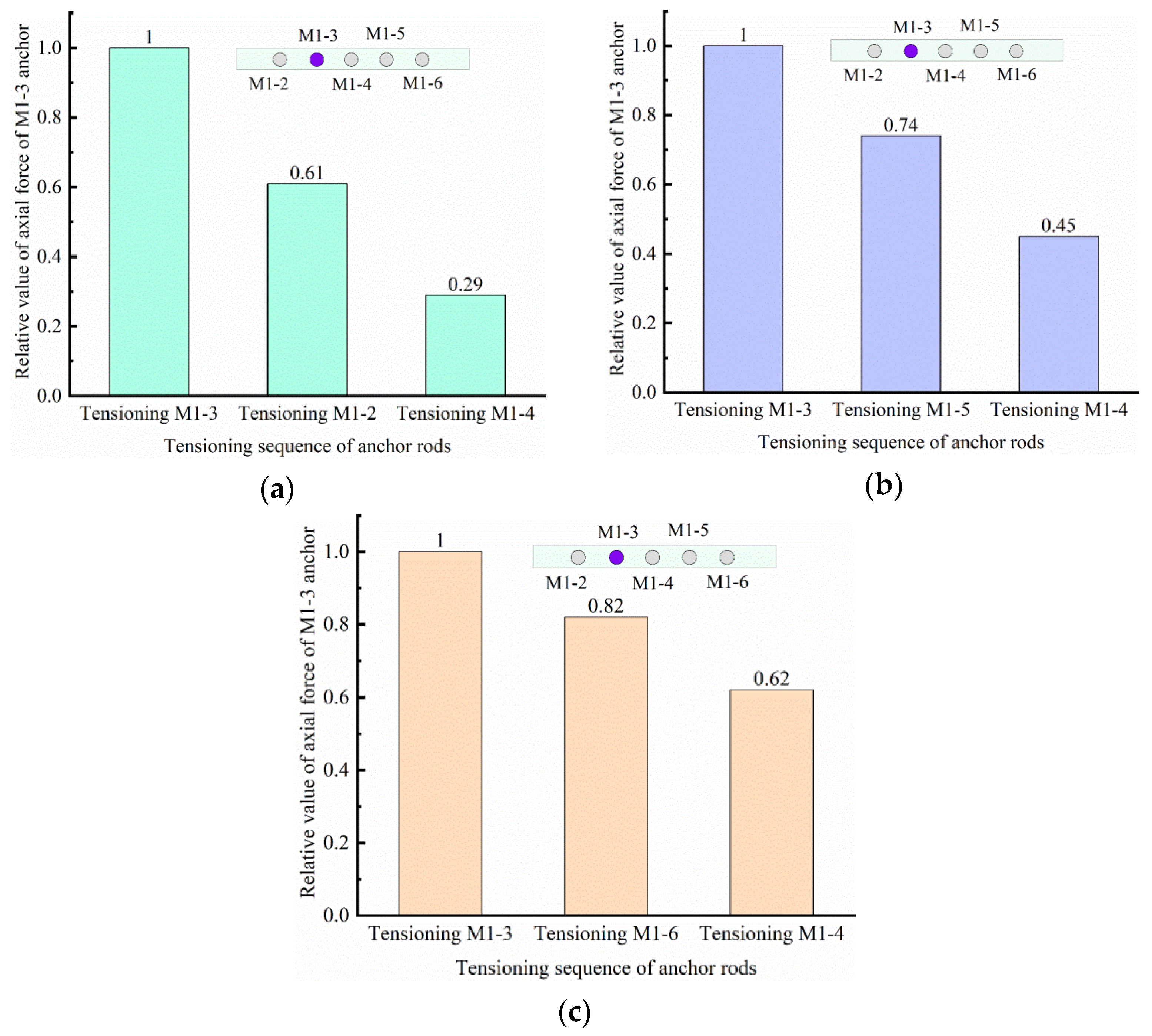The limited land available for construction in northwest China has constrained the sustainable development of the region. In order to solve the problem of insufficient land for construction, the development and expansion of underground space has become an effective way to solve the problem, but this has also given rise to many complex foundation pit projects at the same time. [
1]. A deep foundation pit is a complex high-risk system, the engineering of which is performed in a multi-phase and multi-field manner, composed of structure, soil and groundwater. It involves the stress path during excavation and unloading of soil, which is closely related to the nature of the soil body [
2,
3]. However, the current theories and methods of foundation pit design are only based on component design, and the experimental research is also based on field test. Restricted by the factors such as site construction conditions and project attributes, field tests sometimes failed to comprehensively test and analyze the stress characteristics of the support structure. Therefore, the indoor model test research can make up for the insufficiency of the field test and can qualitatively analyze the mechanical characteristics of the support structure.
There are many scholars who have carried out a lot of research on the model test of foundation pits. Xie Yu [
4] studied the bending moment and earth pressure of passive piles subjected to horizontal force through model tests, believing that the bending moment curve of passive piles changes with the distance between the pile and the load boundary and intersects at the lower part of the pile. Xie Jiang [
5] simulated the excavation process of the foundation pit through the photoelastic test and studied the force chain and its variation characteristics of the soil around the foundation pit. Liu Yiao [
6] conducted a 1:30 indoor model test of foundation pit excavation. He obtained the earth pressure distribution, the horizontal displacement of the wall and the settlement law behind the wall, which were verified by finite element method. Bai bing [
7] derived the generalized effective stress principle, which differs from the classical effective stress principle in that the model can automatically take into account the effects of stress paths, temperature paths, and soil structure. Yu Suhui [
8] studied the influence of foundation pit excavation and construction on adjacent existing buildings and surrounding soil through model tests; he discussed the horizontal and vertical displacements of the adjacent buildings, the earth pressure around the foundation pit and the variation law of the existing building foundation under different parameters. Xiao Yang [
9] used a large model box to simulate the whole process of underground space excavation and studied the influence of several parameters on the h-shaped support system with double-row piles. The test results showed that significant load transfer effects were generated between the rows of piles and that increasing the row spacing within a certain range could result in a more reasonable distribution of bending moments and pile forces. Zheng Gang [
10,
11] studied the influence of local anchor failure on the soldier pile support system through an indoor model test system. They clarified the mechanism of the continuous failure of the foundation pit and proposed an active, real-time, targeted deformation control method. Tang Deqi [
12] studied the evolution of supporting structure performance and earth pressure through large-scale model tests. Wu Honggang [
13] studied the synergistic deformation of a combined structure of high-fill slopes through model tests, which was composed of a pile-anchor and reinforced soil. Liang Fayun [
14], Lin Hai [
15] and Zhao Zhuangfu [
16] studied the bearing and deformation characteristics of axially loaded piles and horizontally loaded piles, respectively, through indoor model tests. Zhou Dong [
17] measured the deformation of the soil around the passive pile under the action of lateral displacement by model tests and obtained the displacement law of the soil around the pile under different embedment depths. Xia Yuanyou [
18,
19] studied the ultimate bearing capacity of anchors with different shapes and the failure mechanism of the fixed anchor length. Shen Hong [
20] analyzed the horizontal displacement of the pile top, the internal force of the pile body and the single-row cantilever pile group through model tests. Zhou Dequan [
21] conducted an in-depth study of the pile-side soil pressure and strain on the pile body of this combined structure of inclined straight piles by model tests, which also included the horizontal displacement of the outer pile. The unilateral force–deformation mechanism and damage mode of the combined structure were revealed. Fan Qiuyan [
22] studied the changes in soil stress, anchorage section stress and lateral displacement of support structure in soil foundation pit during excavation and prestressed anchor construction by large indoor model test. Ye Shuaihua [
23,
24] conducted a systematic study on the deformation of the foundation pit and surrounding structures and analyzed the safety of the adjacent subway tunnel during the excavation of the foundation pit.
As a non-linear elastic material, the stress, strain, and strength properties of soil under stress distortion are quite different from those under conventional perimeter pressure. Conventional model tests are conducted under 1 g (g is the acceleration of gravity), and therefore, the conventional method underestimates the earth pressure and soil deformation caused by the excavation of the foundation pit [
25,
26]. Centrifugal tests, which can be performed under ng conditions, can create artificial gravity to compensate for this aspect. Zhang Ga [
27] designed a centrifuge model test for foundation excavation used a loading system instead of excavated soil to increase the centrifugal acceleration to achieve a suitable self-weight stress state before excavation. After a series of tests, he was concluded that the real path of stress and deformation of the foundation pit could be reasonably simulated by the centrifuge model test. Sun Yuyong [
28] studied the deformation characteristics of the foundation pit through field measurements and centrifuge model tests. It was concluded that the maximum sidewall displacements of the inner and outer pits decreased approximately linearly with the increase of the inner pit spacing but increased with the growth of the inner pit excavation width. Jin Hongliu [
29] conducted a series of centrifuge model tests and numerical analyses. The deformation and earth pressure of the retaining structure, and the deformation characteristics of the retaining structure under various restricted soil widths, were studied. Jia Jinqing [
30], Ma Xianfeng [
31], Xu Qianwei [
32], Zhou Qiujuan [
33], and Li Lianxiang [
34,
35] carried out a series of centrifuge model test studies on foundation pits in soft soil areas from different degree perspectives and summarized the internal force and deformation law of the support structure.
Most of the above studies are focused on the economically developed soft soil areas in eastern China. Since the economic level and urban construction in the loess region of northwest China lag behind those in the soft soil region, the research on foundation pit engineering has not kept pace with the soft soil region. Foundation pit engineering has obvious regional characteristics; in other words, there is a huge difference between the engineering characteristics of loess and soft soil, which determines that foundation pits in loess region cannot copy all the experience of foundation pits in soft soil region. For this reason, it is very necessary to carry out the study of indoor model tests for foundation pits in loess areas.
